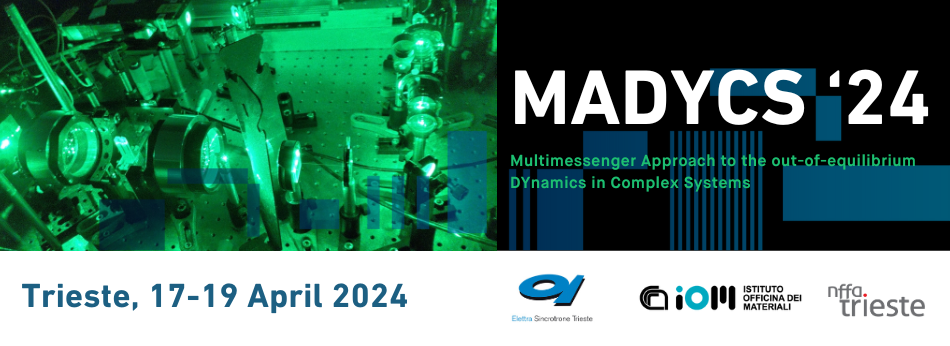Speaker
Description
Hybrid-polaritons are energy states obtained from the strong coupling between matter excitons and optically confined photons [1]. In case of donor-acceptor microcavity system, when both excitons are coupled with the same cavity mode three polariton states are formed. Such states are named: Upper Polariton Branch (UPB) energetically higher with respect to the donor exciton, Lower Polariton Branch (LPB) energetically lower with respect to the acceptor exciton and Middle Polariton Branch (MBP) energetically placed between the excitons. Recently, the use of organic semiconductors as donor and acceptor molecules come into the spotlight due to their large binding energy allowing to observe polariton effects at room temperature [2]. Such effects can impact to the energy transport properties of the system by promoting an energy flow between molecules spatially separated over mesoscopic distances as it is observed in recent photoluminescence experiments [3]. It is theoretically predicted that the more efficient connection between molecules can be only provided when the excitonic and photonic component of the polaritons are balanced. This will produce a polariton wavefunction that is spatially delocalized among the entire system [4]. However, the ultrashort lifetime of the photons in the cavity and uncertainty of the spectral assignment of polariton states have hindered the direct experimental observation of such effect so far.
In this view, two-dimensional electronic spectroscopy (2DES) is a perfect tool to detect ultrafast processes and disentangle spectral features since it provides time resolved excitation/detection energy 2D map with sub-20fs temporal resolution. Specifically, this technique collects the information from the third order nonlinear signal generated from the system after the interaction with three delayed broadband laser pulses. The first and the second pulses act as a pump and the third one as a probe. The delay between the first two pulses is labeled as t1 (coherence time) and the delay between the second pump and probe is labeled t2 (waiting time). The response function of the system is then collected with a spectrometer which provides the detection energy resolution of the experiments. The 2D maps are obtained by scanning both delays (t1, t2) and by Fourier transforming the t1 time traces [5]. Lately, 2DES has been exploited to study polariton dynamics in various systems, even to resolve energy transfer (ET) processes in hybrid architectures where the nature of the polaritons was strongly excitonic [6].
Here, we apply 2DES with ultra-broadband visible pulses to study ET in a microcavity comprised J-aggregates spatially distanced by 2μm, where the photonic and the excitonic contribution of the polaritons are similar. The results show a spectral signature of the coupling between the UPB, MPB and LPB states. Specifically, by exciting the UPB, we observe a quasi-instantaneous signal of all the other polaritons by providing a direct connection between the donor and acceptor molecules. As a proof of concept, we also performed 2DES experiment on the out-of-cavity system where a direct excitation of the donor does not provide an ET to the acceptor. Supported also by 2DES simulations, we rationalize our data by proposing a direct energy delocalization among the polaritons responsible of wiring the energy flow between the two molecules. Our findings can be exploited to improve energy transport properties in light harvesting devices.
[1] A. V. Kavokin, e.t al., Microcavities, Oxford University Press (Oxford, 2007).
[2] J. D. Plumhof, et. al., Nat. Mater., 13, 247-252 (2014).
[3] K. Georgiou, et. al. Angew. Chem. Int. Ed., 60, 2-9 (2021).
[4] C. Sánchez Muñoz, et. al. Nat Commun. 9, 1924 (2018)
[5] M. Cho, et. al. J. Chin. Chem. Soc., Vol. 53 No1, (2006).
[6] M. Son, et. al. Nature Commun. 13, 7305 (2022).

